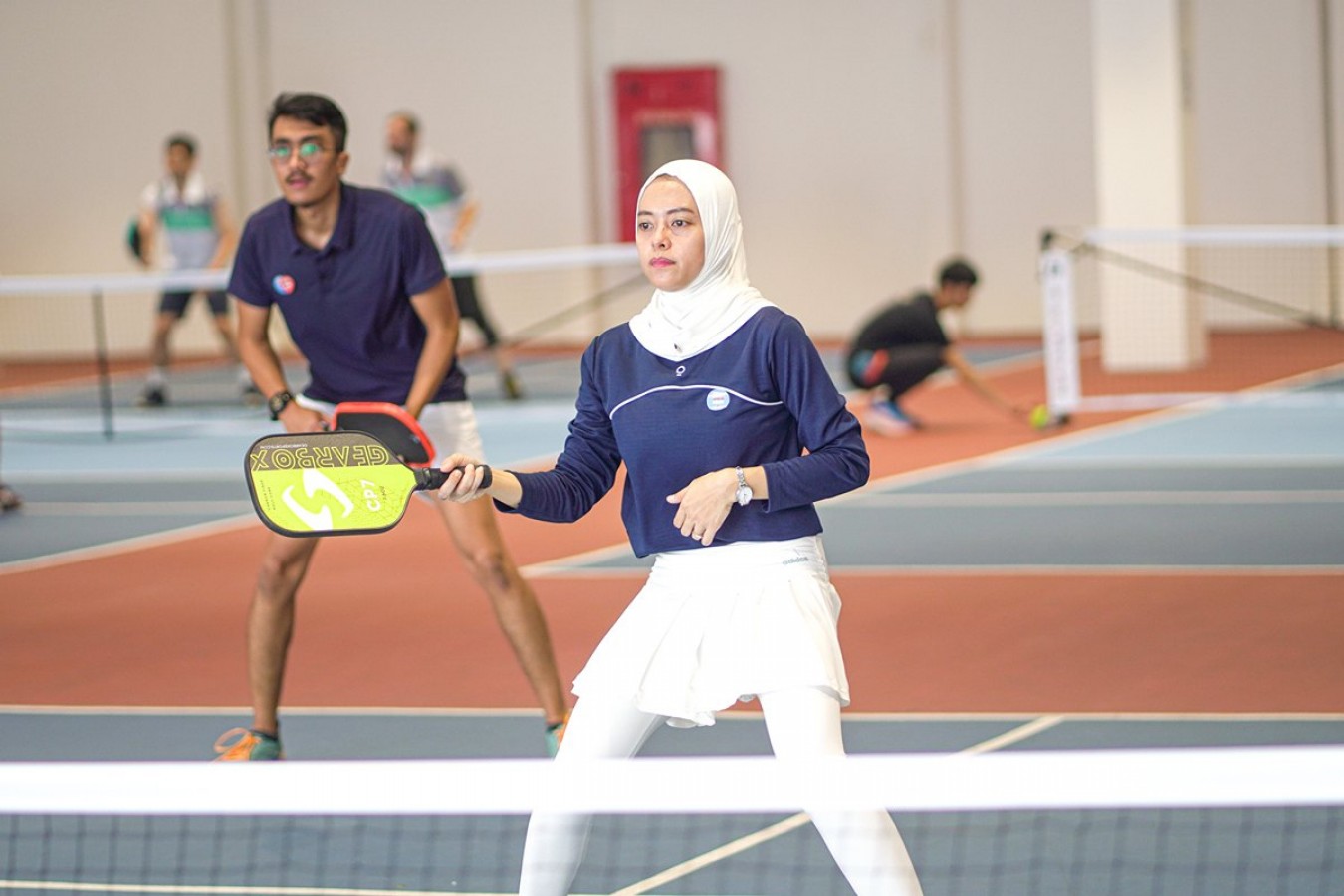Understanding Tennis Volley: How to Hit a Perfect Volley

A tennis volley can be a powerful tool in controlling the pace of the game and finishing points decisively.
This article delves into what a tennis volley is, explores different types of volleys, provides tips on how to hit a perfect volley, and discusses specific volleys played in various positions and situations.
Additionally, we’ll look at some essential volley drills to help refine your technique. Let’s check it out!
What is a Tennis Volley?
In tennis, a volley is a shot where the ball is struck before it touches the ground. This technique is generally performed close to the net, and it's used to intercept and return the opponent’s shots quickly.
The primary goal of a volley is to place the ball out of reach of your opponent, usually aiming for areas where they are least likely to defend. Volleys are crucial for maintaining pressure on your opponent and capitalizing on their weak shots.
Types of Tennis Volleys
In tennis, there are several types of volleys that players use depending on the situation and their position on the court. Each type of volley requires a specific technique and strategy. Here’s a breakdown of the primary types of tennis volleys:
1. Punch Volley
This is a firm, controlled volley where you use the pace of the incoming ball to redirect it with a compact, punch-like motion. It’s ideal for reacting quickly to fast shots and maintaining control over the ball's trajectory.
2. Drop Volley
Executed with a gentle touch, the drop volley is used to drop the ball just over the net, often catching your opponent off guard.
It’s effective when you want to use your opponent’s speed against them, especially when they’re positioned deep behind the baseline.
3. Block Volley
This volley is used to block back a powerful shot from your opponent. By using a stable racket face and absorbing the pace of the incoming ball, you can direct it back with minimal movement, making it ideal for dealing with aggressive shots.
4. Lob Volley
The lob volley is used to lift the ball over your opponent when they are positioned close to the net. This shot requires precise timing and a well-angled racket to ensure the ball clears the opponent’s reach and lands deep in the court.
5. Swinging Volley
Unlike other volleys, the swinging volley involves a full swing of the racket, similar to a groundstroke. This type of volley allows you to generate more power and spin, making it useful for finishing points with authority.
6. Half Volley
The half volley is performed when the ball is just about to bounce or has just bounced. It requires quick reflexes and precise timing to intercept the ball effectively, often used when you are caught off guard or need to react quickly to a low shot.
How to Hit a Perfect Volley
A well-executed volley can make you look like a pro and put your opponent on the defensive instantly. Unlike groundstrokes, volleys are taken before the ball bounces, which means quick reflexes, good positioning, and proper technique are essential. Let’s break it down step-by-step:
Stage One: Get Ready Before the Ball Arrives
The moment your opponent returns the ball, shift into your ready stance. Stand on the balls of your feet, not your heels—this keeps you light and agile. Bend your knees slightly so you’re ready to spring into action.
Face forward towards the incoming ball, holding your racket at waist height, pointed in the ball’s direction. This position helps you react quickly, whether the shot comes fast or slow.
Stage Two: Prepare the Swing
As the ball gets closer, raise your racket to head height. Extend your hitting arm fully while rotating your shoulder away from the ball, bringing your racket slightly behind your head.
This coiling motion stores power without relying on a huge swing—perfect for volleys, which need control more than brute force.
Stage Three: Step and Strike
Shift your weight from your back foot to your front foot while stepping towards the ball. This forward momentum adds power and stability.
Extend your racket towards the ball, keeping your non-hitting arm stretched out for balance. Keep your eyes locked on the ball from start to finish—losing sight for even a split second can cause a mishit.
Stage Four: Make Contact and Follow Through
When you meet the ball, keep your wrists firm—no floppy movements here. Aim for a high-to-low swing path, directing the ball slightly downwards. This creates a crisp, controlled volley that’s hard for your opponent to return.
Your follow-through should be short and controlled, with the racket pointing toward your intended target, almost like a gentle chopping motion.
Once the shot is complete, return immediately to your ready position, prepared for whatever comes next.
Mastering the Forehand and Backhand Volley in Tennis
In tennis, a volley is a powerful tactic to destabilise your opponent. By intercepting the ball before it bounces, you take away your opponent’s preparation time, forcing them into rushed, awkward returns. This quick, aggressive style of play can shift the match’s momentum in your favour, especially when executed with precision and good court positioning.
Let’s look closely at the two main types: the forehand volley and the backhand volley.
The Forehand Volley
For many players, the forehand volley feels the most natural. It starts with quick preparation—your shoulders rotate slightly, and your dominant arm opens up to position the racket for contact.
When making the shot:
- Extend your body forward, transferring your weight onto your front foot for maximum impact.
- Keep the racket head slightly above the wrist level—this maintains control and prevents the ball from floating too high.
- The motion should be short and sharp, focusing on placement rather than a full swing.
The Backhand Volley
The backhand volley is often trickier to master, but in the right hands, it’s a formidable weapon. This stroke begins with a quick body rotation, coupled with a slight extension of the dominant arm. Your non-dominant hand plays a key role here, helping to stabilise the racket during preparation.
Key points to remember:
- Make contact with the ball while keeping your grip steady and firm.
- Direct the ball intentionally to the target area—angles work beautifully here to pull your opponent wide.
- The movement is shorter than the forehand volley, but must remain smooth to maintain control and accuracy.
Specific Volleys Played in Certain Positions and Situations
Understanding when and how to use specific volleys in different positions and situations can greatly enhance your effectiveness at the net. Here’s a breakdown of various volleys and the best scenarios to use them:
1. Volley Played at Center Mid-Court (1st Volley)
This volley is typically executed low to the ground, such as during a volley serve or when approaching from the backcourt. The key is to maintain a low center of gravity and keep your eyes level with the ball at impact.
Use an open, forward-facing stance and move towards the net to reduce your opponent's options. For high mid-court volleys, prepare with your racket arm upright and use wrist pronation and pectoral muscle engagement to control the shot.
2. The Finishing Volley
Close to the net, the finishing volley aims to end the point. Often requiring minimal movement, it can be executed from a stopped position or with a slight thrust on one foot.
The motion is short, especially for cross-court volleys, ensuring quick and precise placement to finish the rally effectively.
3. The Far from Center Volley
Used to intercept passing shots near the alleys, this volley demands maximum body extension. Turn your hips, extend your arm-racket combination, and spread your feet widely to maintain balance while reaching the ball.
This volley requires great physical ability and precise timing to cover the maximum distance and maintain control.
4. On the Body Volley
Common in doubles, this volley involves freeing yourself from a shot aimed directly at your body. If you have time, move laterally to play a normal volley.
If time is limited, rely on technique: prefer the backhand volley with your elbow outwards, or if forehand is necessary, keep your hand in front and open your wrist. Pair the hit with a lateral sidestep to stay balanced and in the game.
Volley Drills You Have to Try
Volley drills are a fantastic way to boost your net play and refine your skills in a fun and engaging manner. They help you build confidence, improve your reflexes, and master different types of volleys, all while enjoying the game with friends or teammates.
Here are some effective volley drills to incorporate into your practice routine:
1. Hit the Racquet Face with the Ball in Your Off Hand
Practice holding the ball with your off hand and gently hitting it against the racquet face. This drill helps you get a feel for the racquet's response and improve hand-eye coordination.
2. Close-Distance Volley Practice
Have someone throw the ball to you from a short distance. Focus on executing both forehand and backhand volleys. Repeat this 10-20 times, then move on to the next drill. This exercise helps you develop quick reactions and control.
3. Slow Forward Arm Motion
With a partner feeding you balls from close range, move your arm slowly forward while letting the ball push the racquet back.
Alternatively, you can have someone feed balls accurately to your racquet. This drill helps you learn to absorb and adjust to the ball's pace, maintaining a smooth volleying motion.
4. Volley to Yourself
Have someone feed you the ball and volley it gently upwards, catching it with your off hand.
This challenging drill improves your ability to watch the ball closely and respond with soft, controlled movements. It’s excellent for developing a stop volley technique.
5. Volley and Re-Volley
Instead of catching the ball, volley it back over the net after hitting it into the air. This advanced drill helps you develop great hands and net awareness, allowing you to manage volleys in a dynamic game situation without verbal instruction.
Start Volleying With Precision Today!
Mastering the tennis volley is essential for any player looking to elevate their game. A volley, as a fundamental aspect of tennis, involves striking the ball before it bounces, allowing for quick, decisive play at the net.
At Rockstar Academy, our Tennis Program is designed to enhance your skills and elevate your game to new heights. Whether you're just starting out or looking to refine your technique, our comprehensive curriculum covers all aspects of tennis, including the innovative game of touchtennis.
Our program offers expert coaching, state-of-the-art facilities, and tailored drills to help you excel in both singles and doubles play. As you progress, you'll have the opportunity to compete in the prestigious RockOlympics, showcasing your skills against top players.
To experience the excellence of our Tennis Program firsthand, we’re offering a free trial at the Sports & Performing Arts Academy. Don’t miss this chance to refine your game and achieve your tennis goals with us!
FAQ
What is the half volley in tennis?
A half volley is a shot played when the ball is just about to bounce or has just bounced. It involves intercepting the ball with a short, controlled stroke, typically executed close to the ground.
When should I use a volley?
Use a volley when approaching the net to intercept and finish points before the ball bounces.



